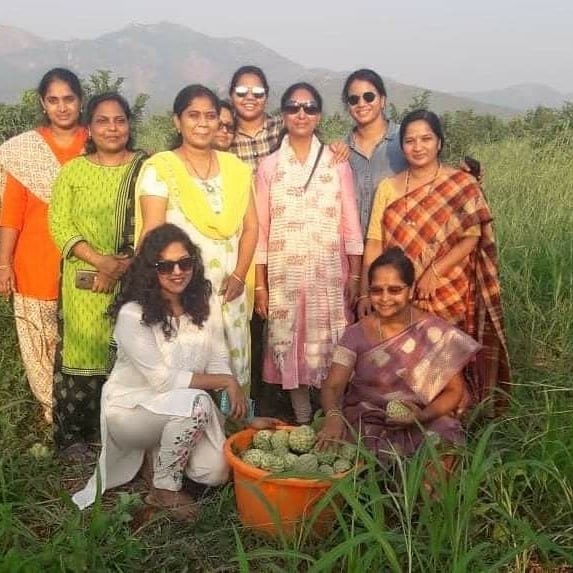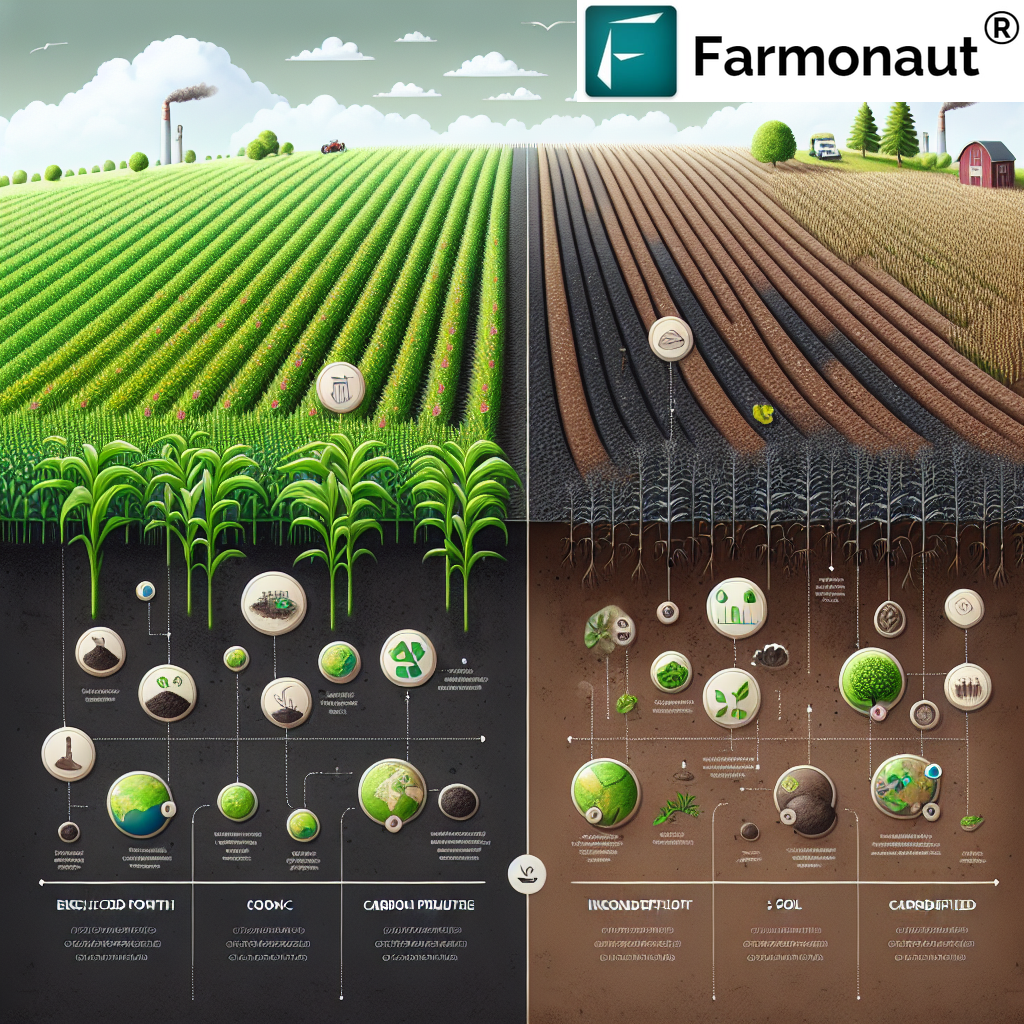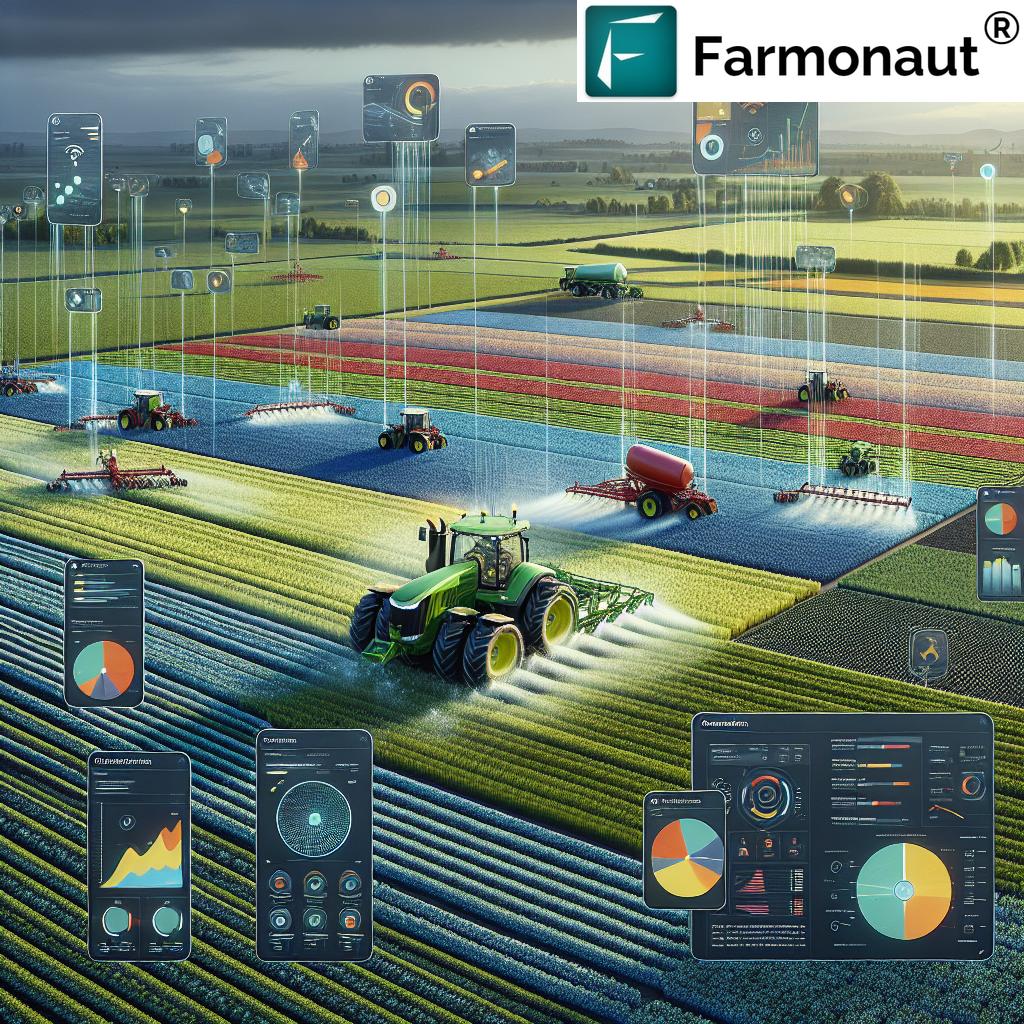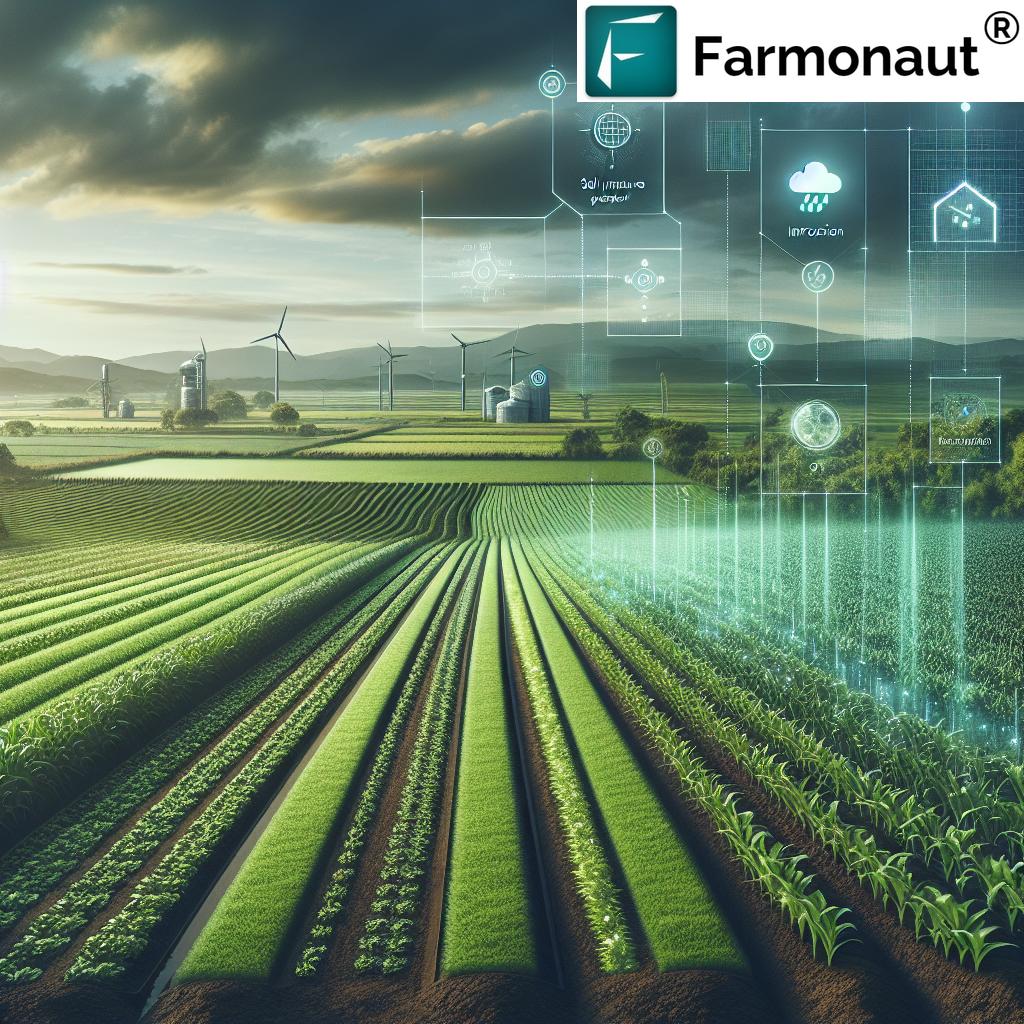Maximize Your Forage Quality: Farmonaut’s Guide to Hay Market Trends and Precision Agriculture Solutions
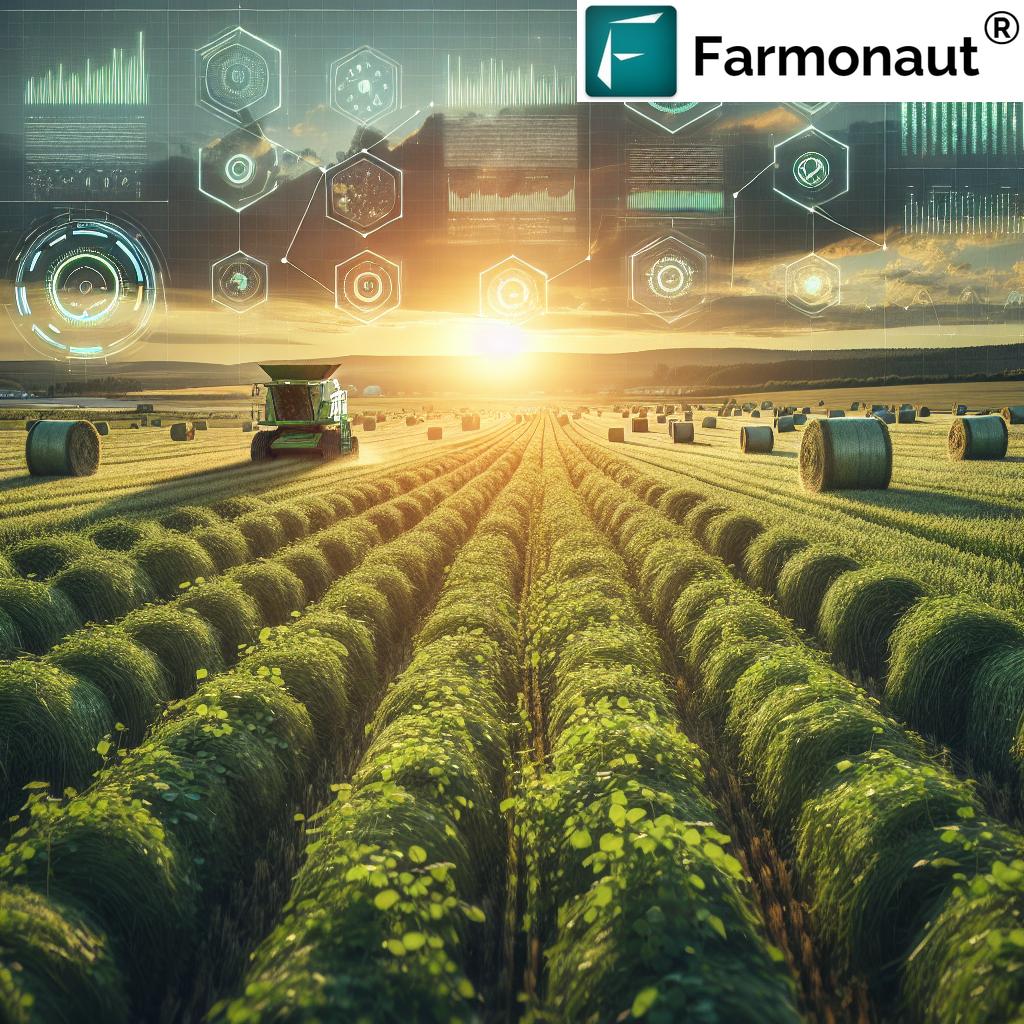
“USDA reports show that relative forage quality (RFQ) can impact hay prices by up to 30% in some markets.”
Welcome to Farmonaut’s comprehensive guide on maximizing forage quality and navigating the dynamic world of hay market trends. As pioneers in precision agriculture solutions, we’re here to provide you with invaluable insights that will revolutionize your approach to hay and silage production. Whether you’re a dedicated hay grower, a dairy farmer, or an equine enthusiast, this blog post is packed with essential information to help you optimize your crop yield and stay ahead in the ever-changing agricultural landscape.
In today’s rapidly evolving agricultural sector, staying informed about the latest market trends, production techniques, and technological advancements is crucial for success. That’s why we’ve compiled this extensive guide, covering everything from alfalfa production techniques to pasture management for horses, and from silage management strategies to the impact of vomitoxin on crop quality.
The Current State of the Hay Market
Before we dive into the specifics of forage quality and production techniques, let’s take a look at the current state of the hay market. Understanding these trends is essential for making informed decisions about your farming operations.
- Price Fluctuations: Recent USDA market reports indicate that hay prices have been experiencing significant fluctuations across different states and markets. Factors such as weather conditions, transportation costs, and demand from various livestock sectors contribute to these price movements.
- Regional Variations: Hay prices and availability can vary greatly depending on the region. For example, alfalfa hay prices in the western states may differ significantly from those in the southeastern states due to local production conditions and demand.
- Quality Premium: High-quality hay, particularly premium alfalfa, continues to command higher prices in the market. Buyers are increasingly willing to pay a premium for forage with superior nutritional value and relative forage quality (RFQ) scores.
To help you better understand the current market conditions, we’ve prepared a comprehensive table comparing hay market prices and quality analysis across different forage types and regions:
| Forage Type | Region | Average Market Price ($/ton) | Relative Forage Quality (RFQ) Score | Crude Protein Content (%) | Total Digestible Nutrients (TDN) (%) | Moisture Content (%) | Vomitoxin Levels (ppm) |
|---|---|---|---|---|---|---|---|
| Alfalfa | Western States | 225 | 160 | 20 | 58 | 12 | 0.5 |
| Timothy | Northeastern States | 180 | 125 | 10 | 55 | 14 | 0.3 |
| Mixed Grass | Southeastern States | 150 | 110 | 12 | 52 | 15 | 0.7 |
| Corn Silage | Midwest | 45 | N/A | 8 | 70 | 65 | 1.2 |
This table provides a snapshot of the current market conditions and quality metrics for different forage types across various regions. It’s important to note that these values can fluctuate based on local conditions and market dynamics.
Leveraging Precision Agriculture for Forage Production
At Farmonaut, we believe that precision agriculture is the key to optimizing forage production and quality. Our advanced satellite-based farm management solutions offer a range of tools to help you make data-driven decisions and improve your overall farm productivity.
Here are some ways our precision agriculture solutions can benefit your forage production:
- Real-time Crop Health Monitoring: Our satellite imagery technology allows you to monitor your forage crops’ health in real-time. By tracking vegetation health indices like NDVI (Normalized Difference Vegetation Index), you can identify potential issues early and take corrective actions promptly.
- Soil Moisture Analysis: Optimal soil moisture is crucial for high-quality forage production. Our platform provides accurate soil moisture data, helping you make informed decisions about irrigation and water management.
- Weather Forecasting: Access to precise weather forecasts enables you to plan your harvesting, baling, and storage activities more effectively, minimizing the risk of weather-related quality losses.
- Field Variability Mapping: By identifying variations in field conditions, you can implement targeted management strategies to improve overall forage quality and yield.
Alfalfa Production Techniques for Maximum Quality
Alfalfa, often referred to as the “Queen of Forages,” is a crucial component of many livestock diets. Producing high-quality alfalfa requires attention to detail and the implementation of best practices. Here are some key techniques to maximize your alfalfa production:
- Proper Soil Preparation: Ensure optimal soil pH (6.5-7.0) and nutrient levels through regular soil testing and amendments.
- Variety Selection: Choose alfalfa varieties that are well-suited to your local climate and have desirable traits such as disease resistance and high yield potential.
- Optimal Seeding Rates: Use recommended seeding rates (typically 15-20 lbs/acre) to achieve a good stand density.
- Timely Harvesting: Cut alfalfa at the early bloom stage for an optimal balance between yield and quality.
- Proper Drying and Storage: Ensure hay is properly dried (moisture content below 20%) before baling and store in a dry, covered area to maintain quality.
“Precision agriculture techniques can increase forage crop yields by 15-20% while reducing input costs by 10%.”
Silage Management Strategies for Optimal Fermentation
Silage is an essential feed source for many livestock operations, particularly in the dairy industry. Proper silage management is crucial for ensuring high-quality feed and minimizing losses. Here are some key strategies for optimal silage production:
- Harvest at the Right Maturity: For corn silage, aim to harvest when the whole plant dry matter is between 30-35%.
- Chop Length: Adjust your chopper for a theoretical length of cut (TLC) of 3/8 to 1/2 inch for corn silage to promote good packing and fermentation.
- Rapid Filling and Packing: Fill your silo or bunker quickly and pack thoroughly to minimize oxygen exposure and promote anaerobic fermentation.
- Use of Inoculants: Consider using bacterial inoculants to enhance fermentation and improve silage stability.
- Proper Sealing: Cover your silage with a high-quality plastic cover and ensure an airtight seal to prevent spoilage.
The Impact of Vomitoxin on Forage Quality
Vomitoxin, also known as deoxynivalenol (DON), is a mycotoxin produced by Fusarium fungi that can affect various crops, including forages. Understanding and managing vomitoxin levels is crucial for maintaining high-quality feed and ensuring animal health.
Here are some key points to consider regarding vomitoxin in forages:
- Occurrence: Vomitoxin is most commonly found in small grains and corn but can also affect other forages under certain conditions.
- Testing: Regular testing of forage samples for vomitoxin levels is essential, especially in years with high disease pressure.
- Tolerance Levels: The FDA recommends that vomitoxin levels in cattle feed not exceed 5 ppm for mature animals and 2 ppm for young animals.
- Management Strategies: To minimize vomitoxin risk, consider crop rotation, using resistant varieties, and implementing proper harvesting and storage practices.
At Farmonaut, our precision agriculture solutions can help you monitor field conditions that may contribute to fungal growth and mycotoxin production, allowing you to take preventive measures and ensure the highest quality forage for your livestock.
Explore Farmonaut’s API for advanced agricultural data analytics
Pasture Management for Horses: Balancing Nutrition and Grazing
Effective pasture management is crucial for maintaining healthy horses and maximizing forage utilization. Here are some key strategies for optimal pasture management in equine operations:
- Rotational Grazing: Implement a rotational grazing system to prevent overgrazing and allow pastures to recover.
- Grass Species Selection: Choose grass species that are well-suited to your climate and meet the nutritional needs of horses.
- Soil Fertility Management: Conduct regular soil tests and apply fertilizers as needed to maintain optimal grass growth and nutritional content.
- Weed Control: Implement an integrated weed management program to prevent the spread of undesirable plants that can reduce pasture quality.
- Monitoring Grazing Intensity: Use our satellite-based vegetation monitoring tools to assess pasture conditions and adjust grazing patterns accordingly.

Hay Storage Best Practices for Long-Term Quality Preservation
Proper hay storage is essential for maintaining forage quality over time. Here are some best practices to ensure your hay remains in top condition:
- Covered Storage: Store hay in a covered area or use tarps to protect it from rain and sun exposure.
- Elevated Storage: Keep hay bales off the ground using pallets or a gravel base to prevent moisture absorption from the soil.
- Proper Stacking: Stack bales in a way that allows for air circulation to prevent mold growth.
- First In, First Out: Use older hay first to minimize storage losses and maintain overall quality.
- Monitoring: Regularly inspect stored hay for signs of heating, mold, or pest infestation.
Access our API Developer Docs for integrating Farmonaut’s data into your farm management systems
Understanding Relative Forage Quality (RFQ) and Its Market Significance
Relative Forage Quality (RFQ) is an important metric used to assess and compare the nutritional value of different forages. Understanding RFQ can help you make informed decisions about forage production, marketing, and livestock feeding. Here’s what you need to know:
- Definition: RFQ is a single number that incorporates both intake and digestibility of forage.
- Calculation: RFQ is calculated using fiber content (NDF and ADF), crude protein, and other factors.
- Interpretation: An RFQ of 100 is considered average quality. Higher values indicate better quality forage.
- Market Impact: Forages with higher RFQ scores often command premium prices in the market.
- Production Goals: Aim for RFQ scores above 140 for dairy-quality alfalfa and above 125 for beef cattle.
The Effects of Frost on Pastures and Forage Quality
Understanding the impact of frost on pastures and forage crops is crucial for maintaining feed quality and managing grazing systems. Here are some key points to consider:
- Nutrient Changes: Frost can cause rapid changes in plant cell structure, affecting nutrient composition and digestibility.
- Prussic Acid Risk: Some forage species, like sorghum and sudangrass, can accumulate prussic acid after frost, posing a risk to grazing animals.
- Grazing Management: Adjust grazing plans after frost events to minimize potential health risks to livestock.
- Winter Hardiness: Late fall frosts can impact the winter survival of perennial forages, affecting next year’s production.
- Monitoring: Use Farmonaut’s satellite-based monitoring tools to track frost events and their impact on your pastures.
Leveraging Agricultural Data Analytics for Improved Decision-Making
In today’s data-driven agricultural landscape, leveraging advanced analytics can provide a significant competitive advantage. Farmonaut’s precision agriculture solutions offer powerful data analytics tools to help you make informed decisions about your forage production. Here’s how you can benefit:
- Yield Prediction: Our AI-powered models can predict forage yields based on historical data, current crop health, and weather patterns.
- Quality Forecasting: By analyzing various factors, we can help you estimate the potential quality of your forage crops before harvest.
- Resource Optimization: Our analytics can help you optimize resource allocation, such as irrigation and fertilizer application, for maximum efficiency.
- Market Trend Analysis: Stay ahead of market trends by accessing our comprehensive data on hay prices and quality metrics across different regions.
- Custom Reporting: Generate tailored reports that provide insights specific to your farm’s needs and goals.
Conclusion: Embracing Technology for Superior Forage Production
As we’ve explored throughout this comprehensive guide, maximizing forage quality and navigating the dynamic hay market requires a combination of traditional agricultural knowledge and cutting-edge technology. By leveraging Farmonaut’s precision agriculture solutions, you can gain valuable insights into every aspect of your forage production, from crop health monitoring to market trend analysis.
Remember, high-quality forage is the foundation of successful livestock operations, whether you’re managing a dairy farm, raising beef cattle, or caring for horses. By implementing the strategies and techniques discussed in this guide and utilizing advanced agricultural technology, you can optimize your forage production, improve your bottom line, and contribute to a more sustainable agricultural future.
Stay informed, embrace innovation, and let Farmonaut be your partner in achieving excellence in forage production and management.
Farmonaut Subscriptions
Frequently Asked Questions (FAQ)
Q: How can Farmonaut’s precision agriculture solutions improve my forage production?
A: Farmonaut’s solutions provide real-time crop health monitoring, soil moisture analysis, and weather forecasting, enabling you to make data-driven decisions that can optimize yield and quality. Our satellite-based technology allows you to identify issues early and implement targeted management strategies.
Q: What is Relative Forage Quality (RFQ) and why is it important?
A: RFQ is a metric that combines forage intake and digestibility into a single number, providing a comprehensive assessment of forage nutritional value. It’s important because it helps farmers and buyers compare different forages and often influences market prices.
Q: How can I mitigate the risk of vomitoxin in my forage crops?
A: To mitigate vomitoxin risk, implement crop rotation, use resistant varieties, and practice proper harvesting and storage techniques. Regular testing of forage samples is also crucial. Farmonaut’s monitoring tools can help you track conditions that may contribute to fungal growth.
Q: What are the best practices for hay storage to maintain quality over time?
A: Key practices include storing hay in a covered area, keeping it elevated off the ground, ensuring proper stacking for air circulation, using older hay first, and regularly monitoring for signs of heating or mold. Proper storage is essential for maintaining nutritional value and preventing losses.
Q: How can Farmonaut’s agricultural data analytics benefit my farm?
A: Our data analytics tools offer yield prediction, quality forecasting, resource optimization, market trend analysis, and custom reporting. These insights can help you make informed decisions about planting, harvesting, and marketing your forage crops, ultimately improving your farm’s efficiency and profitability.






